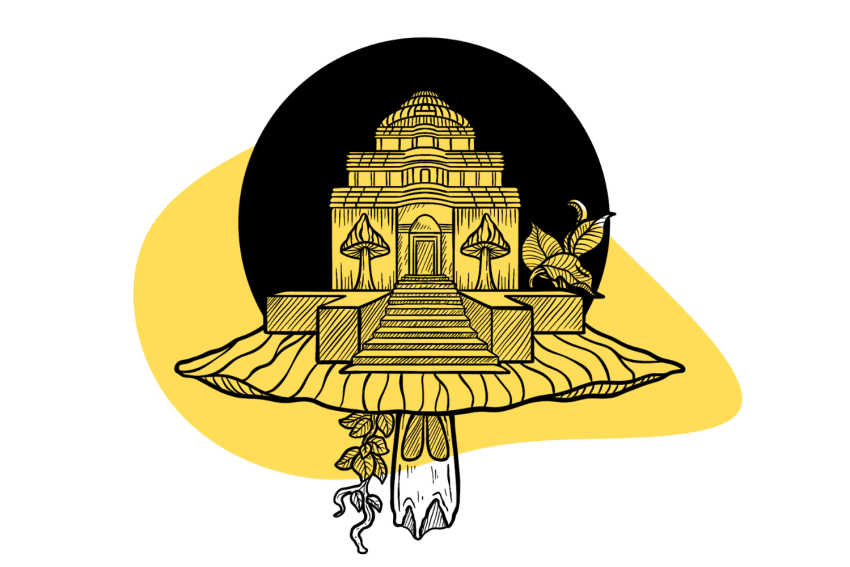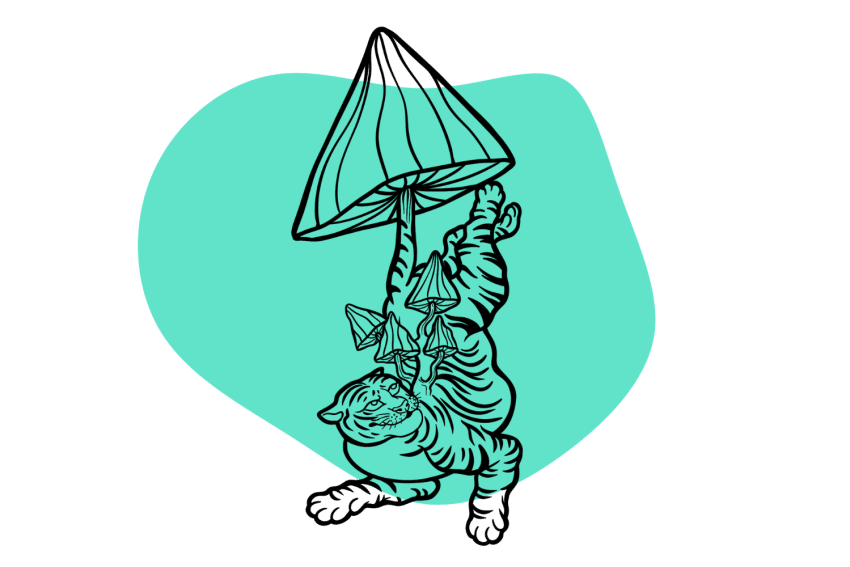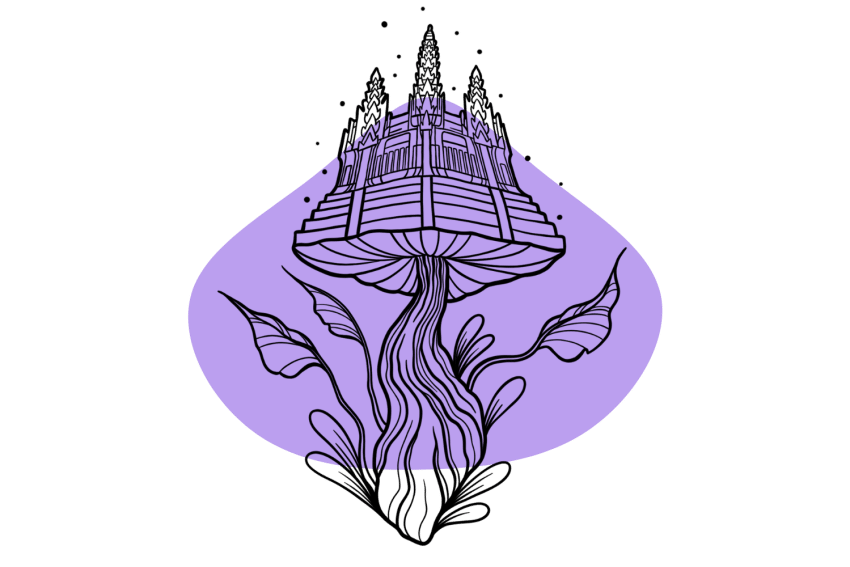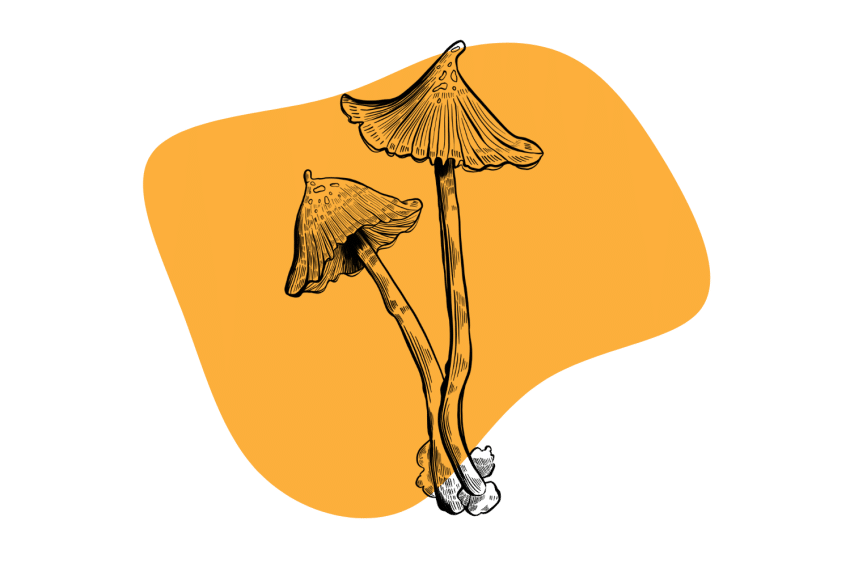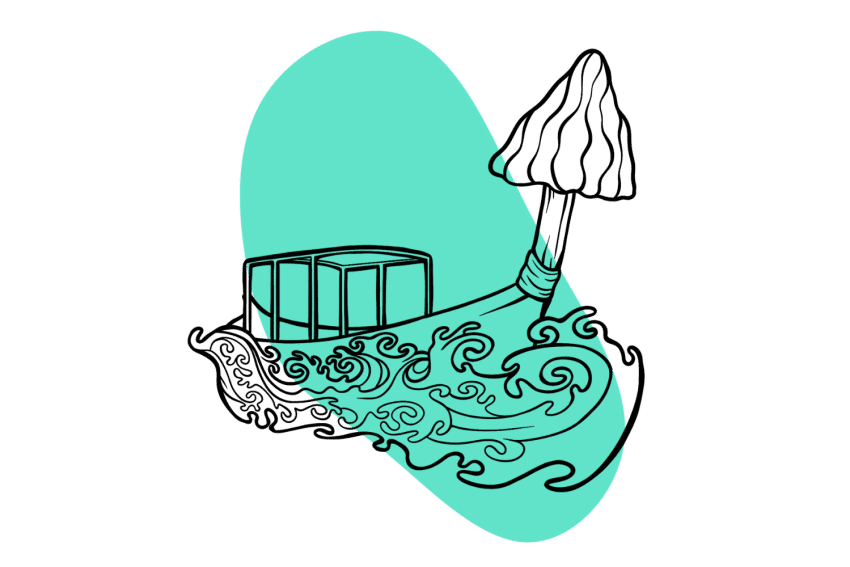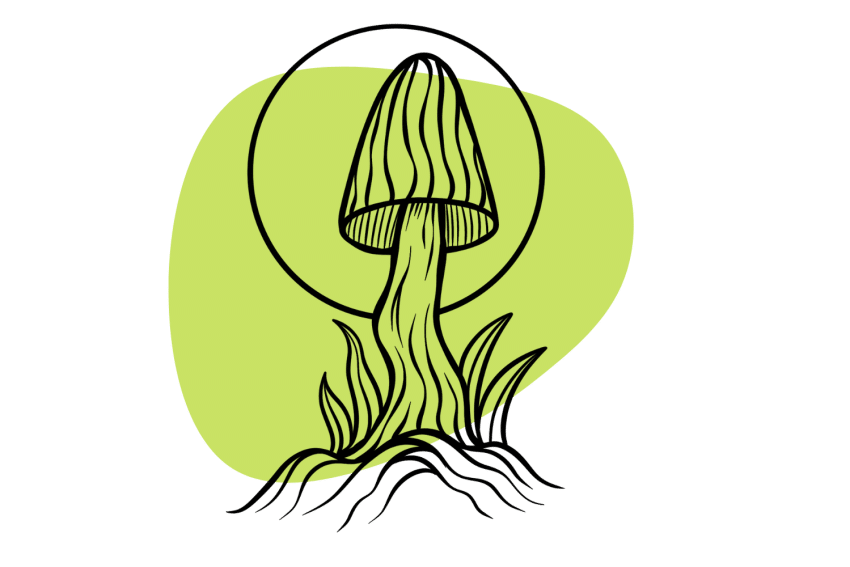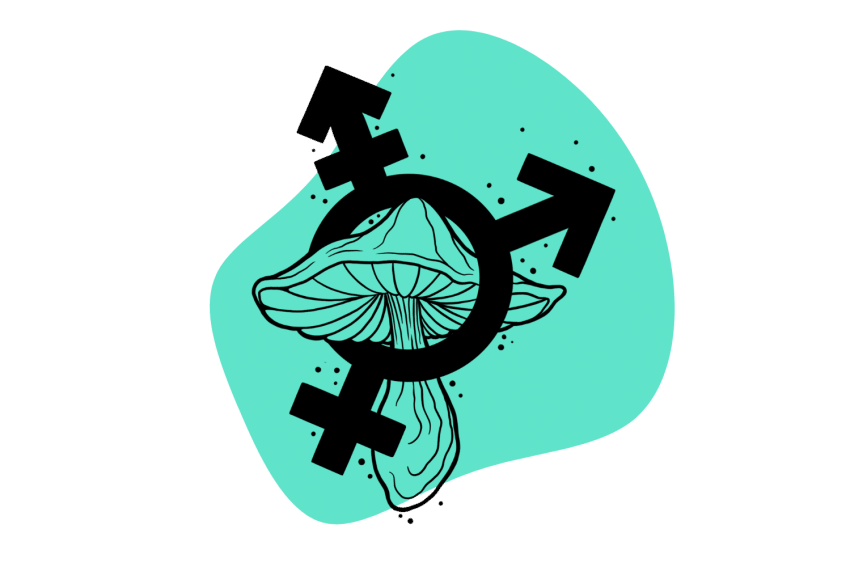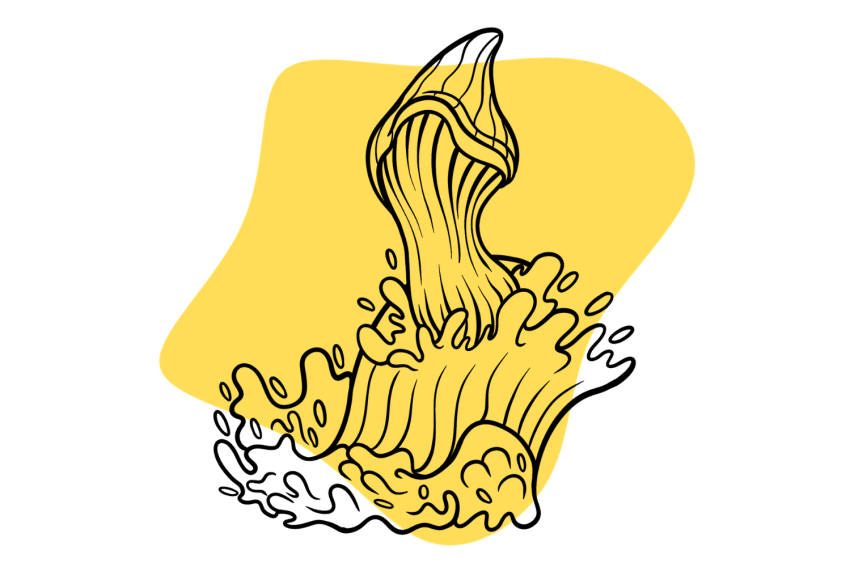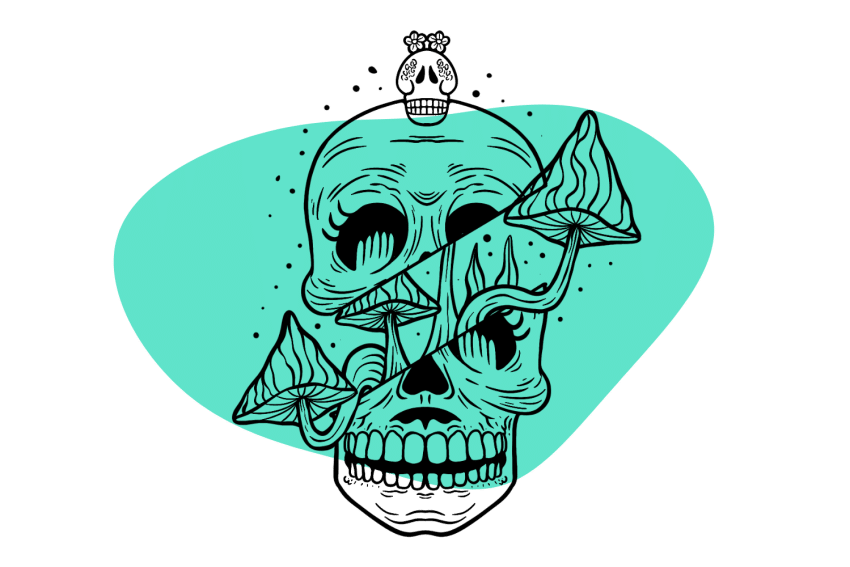Campinas Magic Mushroom Strain
Campinas is a rare brazilian Psilocybe cubensis strain. It’s not an easy strain to cultivate, but those that take on the challenge may be greatly rewarded.
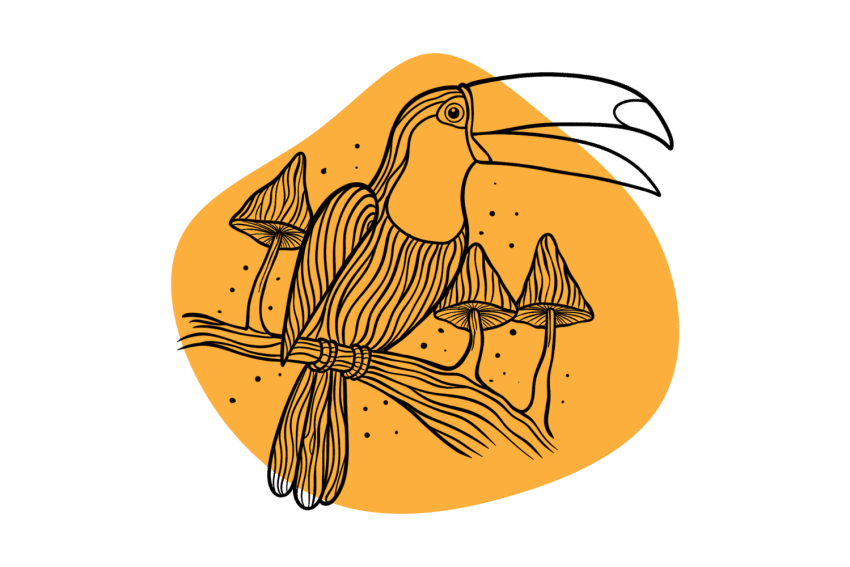
The Campinas strain is relatively new to the market. This rare Psilocybe cubensis strain was collected in São Paulo, Brazil, in 2009.
This mushroom isn’t one for the beginner grower. It can be challenging to cultivate, but with sterile practices and a controlled method, medium to large-sized mushrooms of above-average potency are possible.
The Campinas strain was extremely unstable and difficult to cultivate when it was first discovered. Over several generations of inbreeding, the strain was genetically stabilized until it reached the market through Ralpsters Spores in the mid-2010s.
The fruiting bodies produced by Campinas spores are relatively boring, with flat brown caps and light stems similar to the Golden Teacher strain. However, these mushrooms have above-average potency and are said to produce pleasant waves of euphoria and strong closed-eye visuals (CEVs).
Spore samples for Campinas can be hard to come by; as it stands, they’re only available from Ralphsters Spores. This means that it’s currently only possible to purchase these spores if you live in the United States of America.
Campinas Strain Specs
| Potency | Above Average 💪 |
| Cultivation | Intermediate |
| Species | Psilocybe cubensis |
| Substrate Recommendation | Rye Grain & Dung |
| Cost | $$ |
| Sold By | Ralphsters Spores |
History of the Campinas Strain
The Campinas strain was initially discovered in Campinas, São Paulo, Brazil, in 2009 by a mycologist from Ralphsters Spores. It took Ralphsters around a year to cultivate the mushroom and stabilize the strain before being able to prepare spore prints for commercial sale. The strain is now a Ralphsters exclusive, and genetics are available in sterile spore syringes and prints.
Apart from this limited information on the Campinas strain, little is known about its origins.
Of course, Brazil has a rich and ancient history of psychedelic use. However, there’s no direct mention of the Campinas mushroom specifically in historic tribal artifacts. As this shroom is pretty common across Brazil, it has likely been used for centuries in various ceremonial practices.
There are around 305 indigenous Brazilian tribes today, with around 900,000 people within them — making up 0.4% of the population of Brazil. Many of these tribes have used native psychedelic plants and fungi for decades to ascend to a higher state of consciousness and connect with the gods.
Campinas Potency & Psilocybin Content
The Campinas mushroom is said to have above-average potency. When looking at trip reports, this strain seems to have relatively high levels of psilocybin. However, due to the rarity of this strain, there’s very little substantial testing, and it hasn’t yet been submitted to the Oakland Hyphae Psilocybin Cup, where it can be formally tested.
Unfortunately, not many other Brazilian cubensis mushrooms resemble the Campinas strain, so it’s hard to even speculate what the average psilocybin content of this shroom is.
As with any psilocybin mushroom, the cultivation process will largely affect its potency.
If the colony is stressed, succumbs to mold, or is grown in inadequate conditions, the psilocybin levels in the resulting fruiting bodies will be greatly sacrificed. On the other hand, if a stable, sterile, and temperature-controlled growing environment is achieved, you can expect higher levels of psilocybin.
Based on past trip reports involving this strain, we estimate the potency of the Campinas strain sits somewhere between 1% and 1.4% total tryptamine content (psilocybin, psilocin, and baeocystin).
The effects of the Campinas mushroom are comparable to strains such as Cambodian, B+, and A-Strain. This would put the strain into “above-average” territory — meaning it’s more potent than your average cube but not as strong as super-strains such as Penis Envy, Fuzzy Balls, or Tidal Wave.
Campinas Variations & Genetic Relatives
There are very few direct genetic relatives to the Campinas strain, and due to the rarity of the genetics, there are no known variations of the strain. However, Brazil isn’t short of native Psilocybe cubensis strains, and the country has birthed several mushrooms that are now popular in the west.
Here are a few popular Brazilian strains:
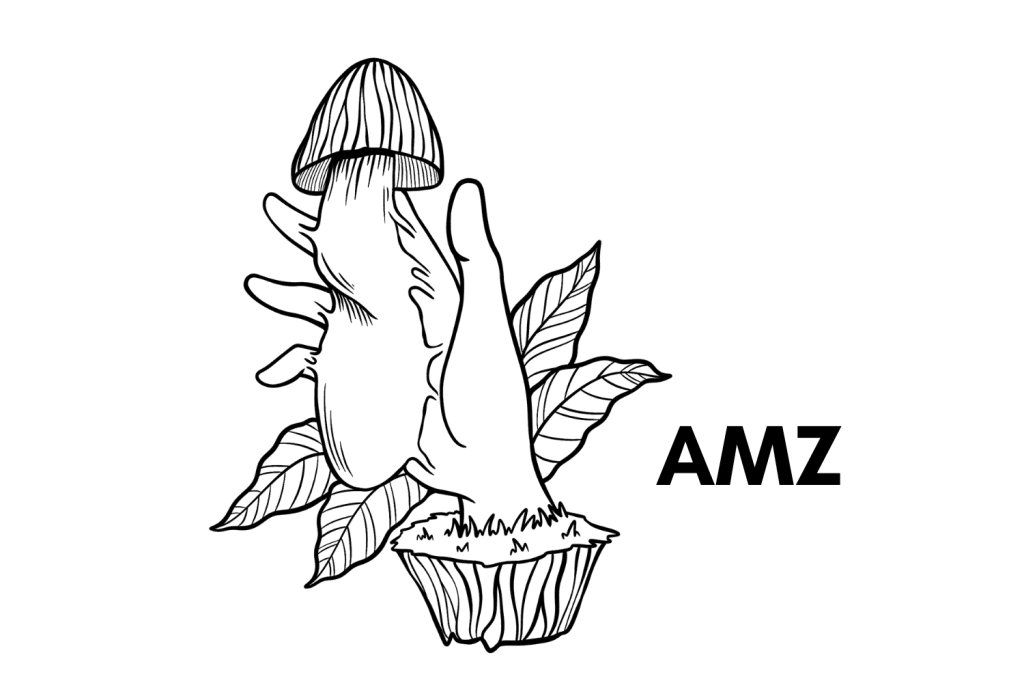
Amazonian Cubensis (AMZ)
Amazonian cubensis, otherwise known simply as Amazon, was initially sold as “PES Amazonia” — PES standing for Pacifica Exotica Spora (the company that first brought the spores to market). The strain’s origins are a little hazy, but we know it’s a tropical strain found in the Amazon rainforest.
This is a relatively common strain sold by several vendors under the names Amazon Strain, Amazonia, and Amazonian Cubensis. This strain produces extremely large mushrooms of average potency. It’s remarkably fast-growing and resistant to contamination, making it an excellent choice for beginners.
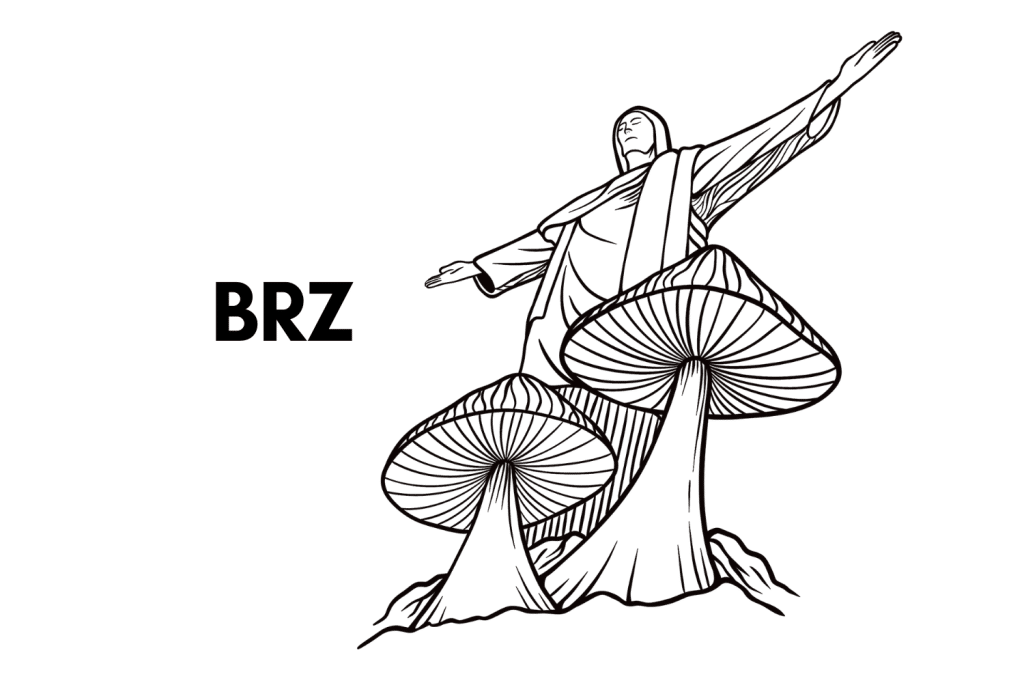
Brazilian (BRZ)
The Brazilian strain is, of course, from Brazil. It’s famous for its extremely aggressive colonization and impressively large fruiting bodies. This is an untampered strain that’s the same as the wild strain the spores were originally collected from.
This strain can grow to incredible sizes in the wild, with reports of mushrooms larger than 18 inches in diameter. However, when cultivated, the fruiting bodies produced are much smaller.
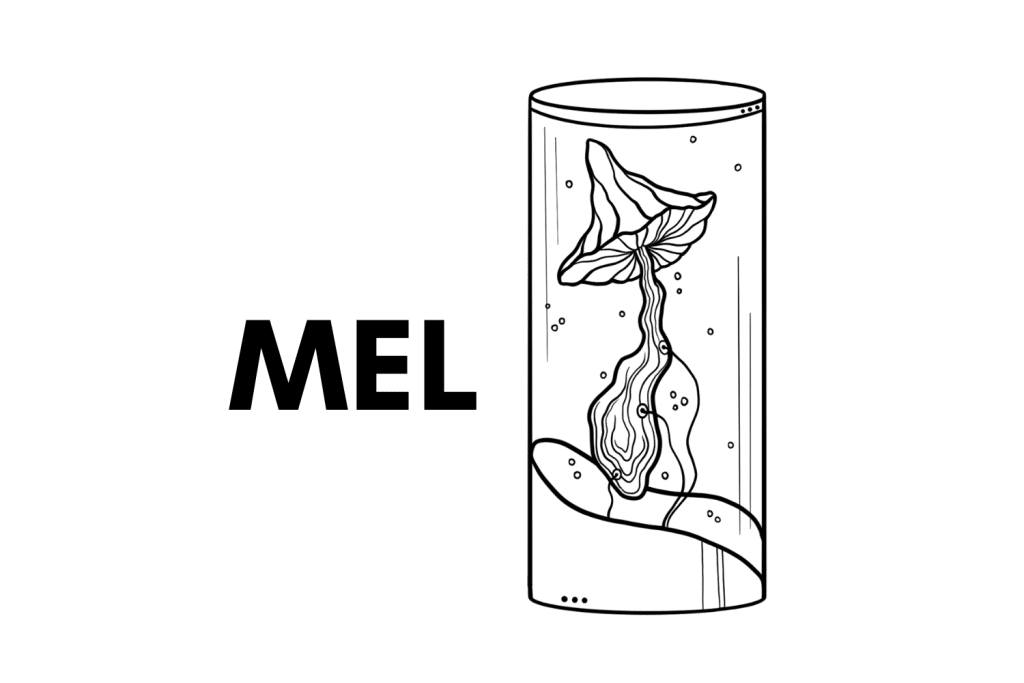
Melmac (MELM)
The Melmac strain is believed to be a genetic offshoot of the Penis Envy strain. It’s an Amazonian strain that was collected by Dennis and Terence McKenna during their expeditions through the Amazon, although this isn’t confirmed. The exact origins are unclear, but this is definitely a mushroom from the rainforest.
Melmac mushrooms are extremely potent, but sourcing genetics can be difficult due to the rarity of the strain. The psychedelic effects and growth patterns are extremely similar to Penis Envy. However, this strain has faster colonization times, is less prone to aborts, and is far easier to cultivate.
Where to Buy Campinas Spores
Campinas mushrooms are quite rare. This isn’t an easy strain to get hold of, and at this moment in time, the Campinas strain is only available from Ralphsters Spores. Genetics are available in the form of sterile spore syringes and prints.
Unfortunately, if you live outside of the United States, you’ll find it challenging to source Campinas’ genetics.
How to Grow Campinas Mushrooms
Campinas mushrooms can be grown like most other strains of Psilocybe cubensis. I wouldn’t recommend the Campinas strain if you’re new to mushroom cultivation. It’s definitely not as easy as highly resistant strains that are relatively fool-proof such as Golden Teacher or Koh Samui.
If you’re a beginner looking to grow your first strain, avoid Campinas. The best beginner strain is the extremely popular Golden Teacher. If you want to learn how to cultivate magic mushrooms, check out our step-by-step guide on how to grow magic mushrooms.
If you’re a little more experienced and want to start cultivating more challenging strains, Campinas is an exciting strain to experiment with. However, there are a few things to note if you want to produce healthy, potent mushrooms.
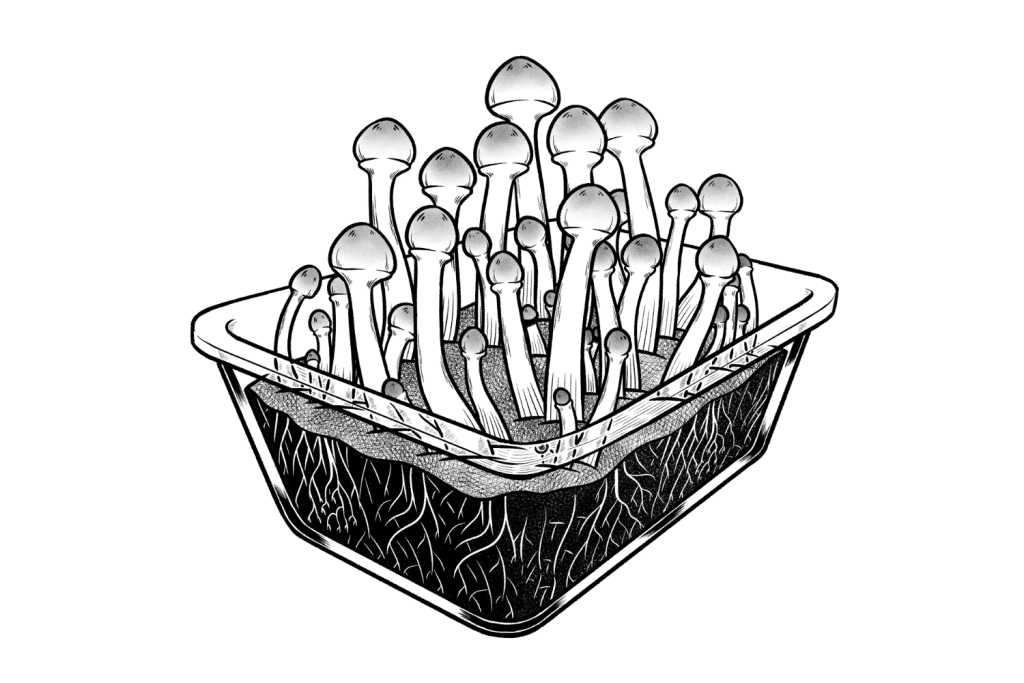
The Campinas mushroom requires a highly sterile and stable environment to flourish. The strain can easily succumb to mold if the proper cultivation methods aren’t practiced. Producing multiple healthy flushes of good-sized, highly potent mushrooms can be difficult because of this factor.
Like other cubensis strains, Campinas can be cultivated on most substrates. However, it thrives in dung. Pasteurized manure is the best substrate to use when cultivating this mushroom’s spores, but Campinas also does well on rye grain.
PF Tek is the easiest and most efficient method for Campinas, but you must remember that it isn’t particularly contamination resistant. You’ll have to be extra cautious and meticulous with keeping your growing environment sterile.
The Campinas strain is also temperature and humidity-sensitive. You’ll need to utilize a heat mat to regulate the temperature of the incubation jars and again for the fruiting chamber to control the humidity and internal temperature.
It would be best if you aimed to keep the temperature of the growing environment between 20 and 27 degrees Celsius (68 to 80 degrees Fahrenheit) and the humidity level above 80%.
Other Rare Magic Mushroom Strains
The Campinas strain isn’t the only rare wild cubensis strain available. There are many other options to consider as well.
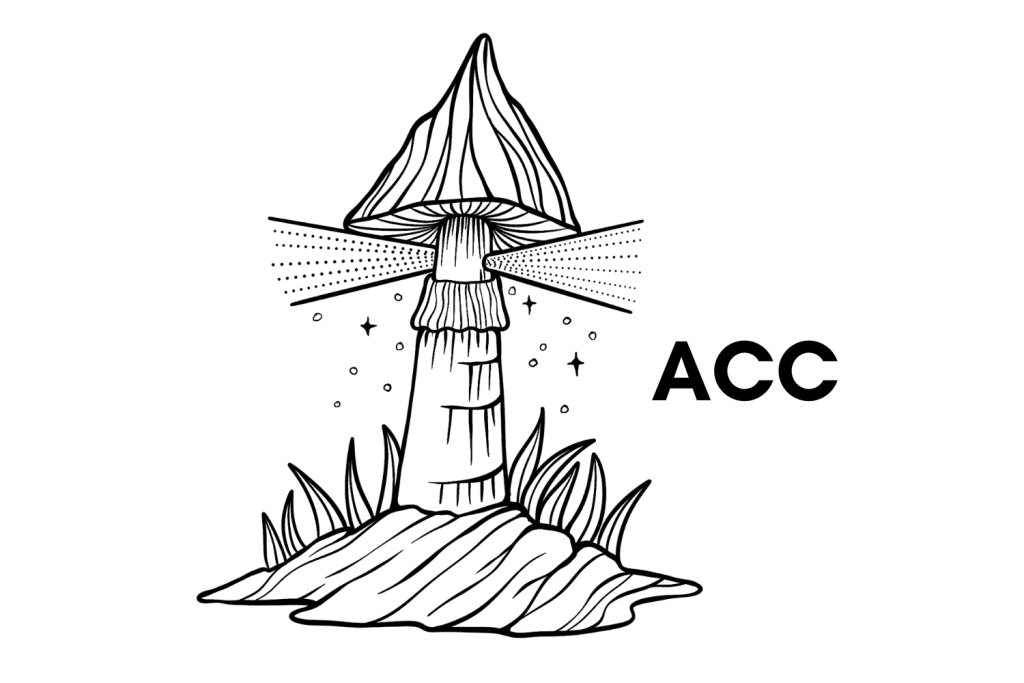
Acadian Coast (ACC)
Acadian Coast is a rare strain. Spores for this strain can be hard to come by, and its origins aren’t exactly clear. It’s believed that ACC is a naturalized strain that was found on the East Coast of North America. It can be found growing naturally along the coast spanning from Newfoundland to Louisiana.
Acadian Coast produces medium-sized fruiting bodies with thick stems and tan-colored caps. It’s renowned for its prolific flushes and good yields, especially through the second and third flushes. However, this strain can be susceptible to contamination, so it’s not a wise choice for the beginner.

Ban Phang Ka (BPK)
Ban Phang Ka is an illusive strain of Psilocybe cubensis that was discovered in Thailand and brought to the west by John Allen during his travels through South East Asia.
This strain produces impressively large mushrooms of average potency. Not much else is known about Ban Phang Ka, and the spores are extremely hard to find. However, if you can track down this strain’s spores, you’ll be rewarded with some incredibly rare Thai shrooms.
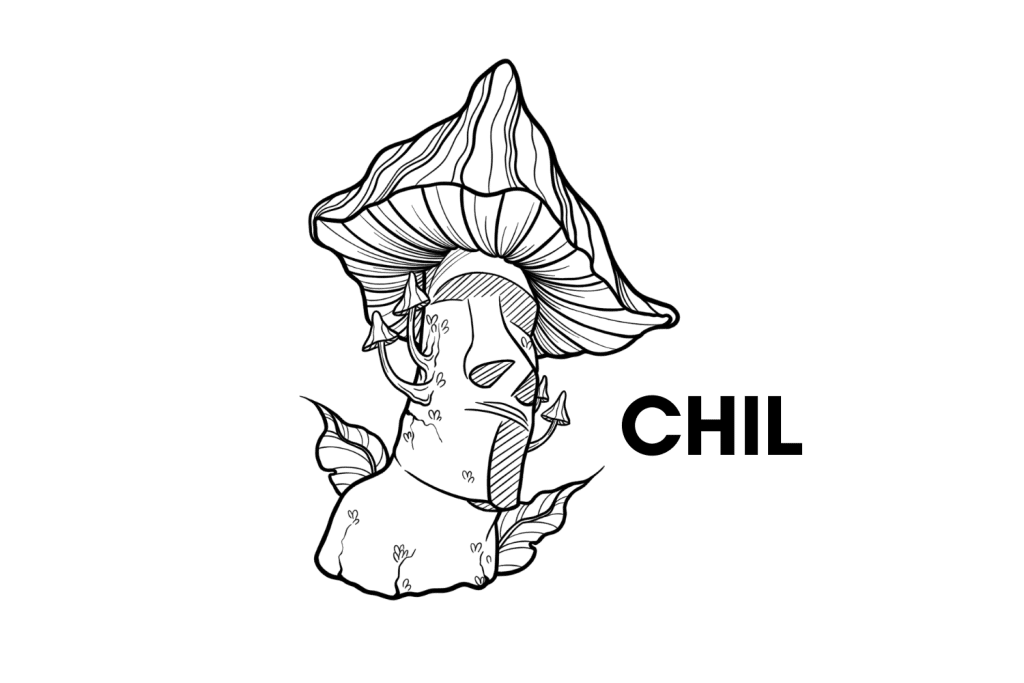
Chilean (CHL)
The Chilean strain is incredibly rare, and spore samples can be difficult to find — the only vendor that seems to stock Chilean pores is Ralphsters. These mushrooms can be found growing in a wide range of altitudes and climates throughout Chile. They are extremely tolerant to unoptimized growing conditions and very contamination-resistant.
Appearance-wise, Chilean mushrooms closely resemble the Amazonian Cubensis strain (mentioned earlier). Large fruiting bodies of average potency are produced when cultivated. However, in the wild, these mushrooms reach far greater sizes.
Final Thoughts: Campinas Mushrooms
Campinas is a rare strain of Psilocybe cubensis initially discovered in Brazil sometime in 2009. It was then cultivated until reliable spore prints were produced for distribution. It’s now available only from Ralphsters Spores in the USA.
This isn’t a magic mushroom strain for the beginner grower, but if you’re a little more experienced and a bit of a shroom connoisseur, you’ll enjoy cultivating this strain.
Cultivation doesn’t come without difficulties, but those who choose to care for the Campinas strain throughout every stage of the cultivation process will be greatly rewarded. Campinas shrooms aren’t much to look at, but if you get your growing environment perfect, you’ll end up with some pretty hefty mushrooms with impressive potency.
Strains vs. Species: What’s The Difference?
The Campinas mushroom is just one of the hundreds of different psilocybe cubensis strains available today. When we talk about strains, we do not mean species. There’s a big difference between strains and species. There are hundreds of different species of psychedelic mushrooms and within these species exist hundreds of strains.
Let’s make sense of all this…
The word species describes a biological family of organisms within a single kingdom. For example, Psilocybe cubensis is a species within the Fungi kingdom.
The word strain describes a genetic variant within a specific species. So, using the example above and the strain featured in this article: Campinas is a strain of the Psilocybe cubensis species, which belongs to the Fungi kingdom.
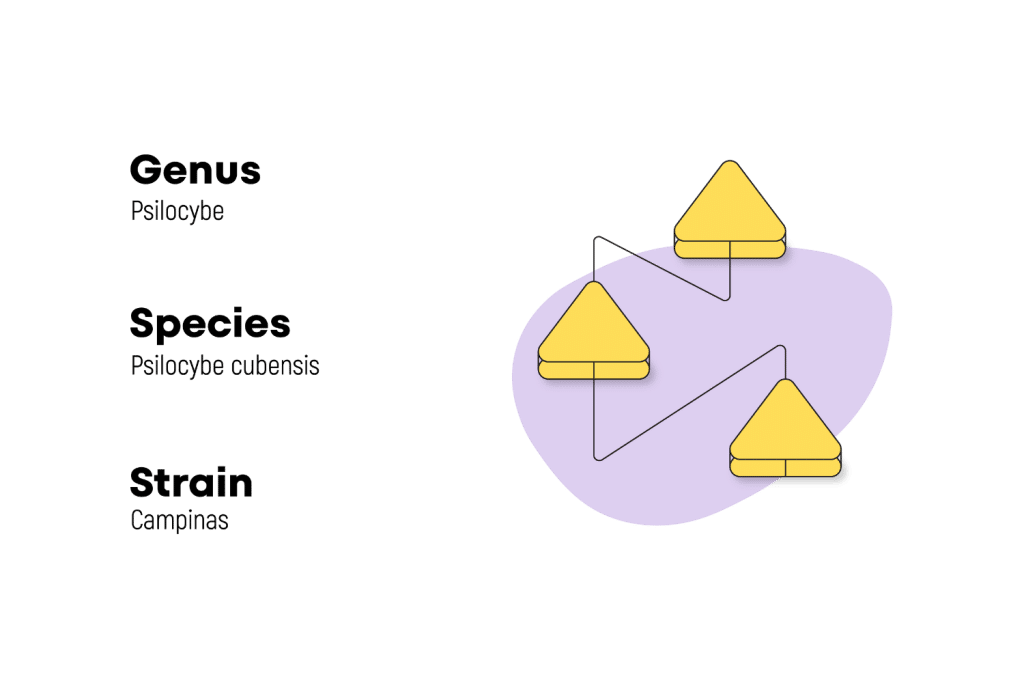
In nature, genetic variants of many different species within the six kingdoms exist naturally. However, the species that have had a human intervention contain the most different strains. This is because we like to cross-breed and alter plants, fungi, and animals to produce genetic differences that benefit us.
Regarding psychedelic mushrooms, we may cross-cultivate different strains for aesthetics and potency. When you look at dogs, we’ve cross-bred within the Canis lupus Famililiaris species to create thousands of unique breeds (which are essentially strains).
Even plants for food, gardens, and medical use have been genetically altered to create several strains within a particular species. Take cannabis, for example. Hundreds, if not thousands, of strains are the same species but vastly different in chemical makeup, appearance, and even scent.

